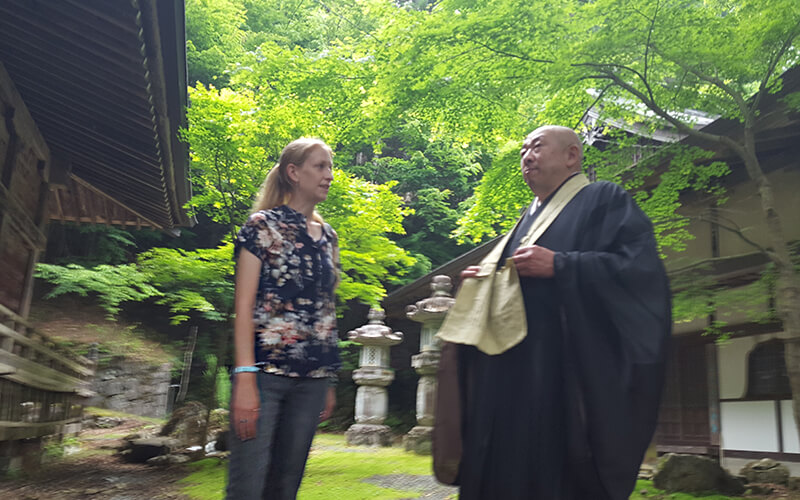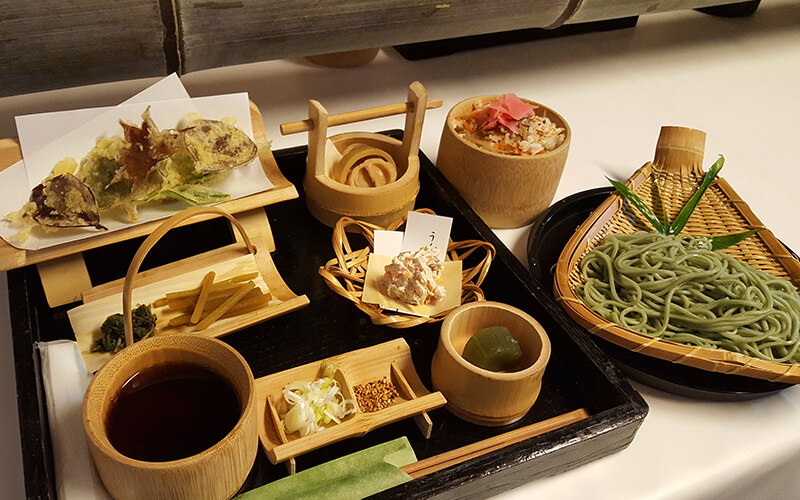What you can Experience at Saitama’s Mountain Temples
features

Updated on:2024.10.23
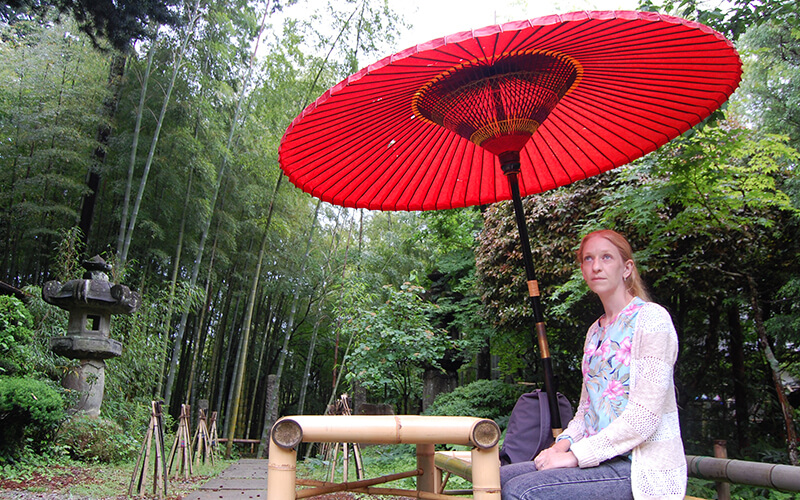
Today let’s head off on a journey of spiritualism in some of Japan’s temples located just north of Tokyo in Saitama’s beautiful countryside.
When people think of Japanese temples many of them think of travelling to Kyoto, Nara, and Kamakura. This time we’ll introduce some lesser-known temple experiences in Saitama.
Surrounded by nature you’ll be able to feel very calm.
For anyone interested in trying zazen and other similar cultural experiences for the first time or anyone who would like to enjoy a uniquely Japanese temple experience while surrounded by nature you should definitely visit.
Taiyoji Temple
Chichibu area is located in Saitama Prefecture’s western side, an area filled with an abundance of diverse terrain ranging from mountains, to rivers, valleys, and forests. Lying deep in the mountains in Chichibu is Taiyoji Temple, where we’ll start our journey.
Taiyoji Temple is a Zen temple that was originally opened as a place for mountain worship. Even now the foundations of zazen at Taiyoji teaches us that there is something to be learned from the great outdoors spreading out before your eyes.
If you’ve ever wondered what life at a temple is like then this is the perfect place to experience it for yourself.
Taiyoji Temple is open to the general public and anyone who wishes to stay as a guest (reservation required). In the morning and evening you can enjoy a taste of the delicacies grown on the mountain and diligently prepared by the resident monk. If you wish to participate in zazen and other similar practices you can do so under experienced guidance.
While many temples in Japan have needed to be rebuilt over time Taiyoji Temple remains as it was when it was first built. Throughout the temple walls and pillars you can feel a sense of the history of the people who have visited over the years.
There are a few options to get here. The easiest is to arrange for the temple monk to pick you up from the nearest train station, Mitsumineguchi station. (For the lodging guests only, excluding day trip guests.)
Please be sure to make arrangements at the time of booking if you’d prefer this option.
If you’d rather drive here, please be aware that the condition of the road will be greatly affected by the weather and there may be many fallen rocks.


“Zazen”
On the temple grounds there is a separate building where you can practice ‘zazen’, seated Zen meditation, while overlooking picturesque scenery.
There are cushions in front of large windows where you can sit for your meditation or if you’d prefer you can also sit in the inner part of the building. Looking out through the open windows will make you feel a small part of nature.
First you will learn the correct posture for meditation. Sit in quiet contemplation as you look out over the rows of trees covering the mountain, listen to the birds singing, the insects calling, and let yourself release all your tension.


“Chanting of the Sutras”
Don’t worry if you’ve never chanted before or don’t know the exact words to say.
The monk has prepared a typed sheet for each participant that is written in either Japanese characters or in the alphabet.
Although it can be quite intimidating for first time participants the monk will chant in a loud voice as well as using a wooden drum so you don’t need to worry about whether you’re repeating everything correctly.
Just enjoy the experience!


“Copying the Sutra”
Maybe this will be the first time you’ve ever tried writing in a different script or maybe you’re proficient. Copying out the sutras is beneficial for everyone.
First, you’ll be given a paper with the sutra printed on it and a piece of tracing paper on top as well as a special pen and mat.
As you begin copying out the sutra in silence you’ll begin to leave behind the stresses of a busy life.
With each character you’ll become more focused on writing every stroke and less aware of the world around you.
Copying the sutras is a great way to practice being still and focusing on a single task.


“Yoga”
For all yoga enthusiasts or anyone interested in trying it, what could be better than a weekend at a temple enjoying yoga on a mountain away from any distractions?
Well, here you have the opportunity to do just that. No matter how flexible or experienced you are all are welcome!
Please check the website to find out when the next yoga retreat is scheduled.
While you’re staying at the temple be sure to take a walk around the area.
You may be able to see some plants or animals you’ve never seen before or you might even encounter a deer.
At one time a deer was raised in the temple by the resident monk. Please be sure to ask him about it when you visit.

<Taiyoji Temple>
Address: 459 Otaki, Chichibu City, Saitama Prefecture
TEL: 0494-54-0296
Access: Get off at Mitsumineguchi Station on the Chichibu Railway. If you take a taxi, it will cost about 3700 yen to Taiyoji Temple.
If you use a bus, take the Seibu Kanko Bus bound for Lake Chichibu/Nakatsugawa from Mitsumineguchi Station and get off at the Taiyoji Iriguchi bus stop, ant about 2 hours on foot (7km) from the bus stop.
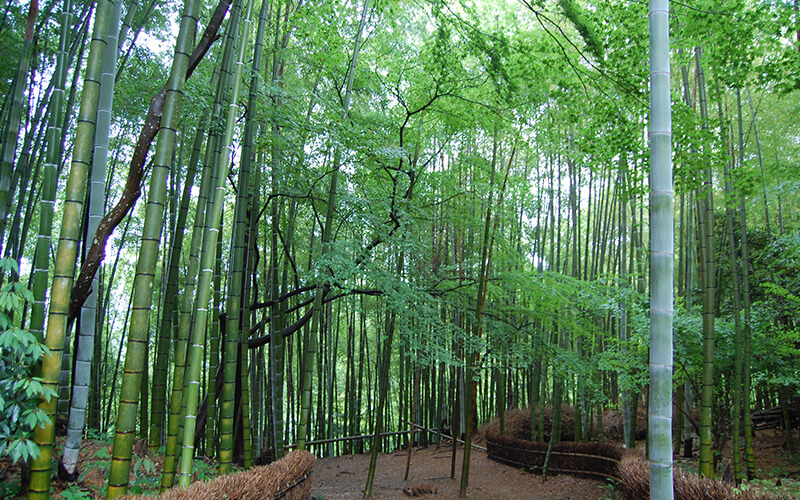

Takedera Temple
In Japanese ‘take’ means bamboo and this temple certainly lives up to its name.Tucked away in the mountain, it’s surrounded by bamboo and was nicknamed the bamboo temple by the local people which eventually led to a change in name.
In the Okumusashi mountains in Hanno City, Saitama Prefecture you’ll find Takedera Temple, a temple combining both Shinto and Buddhism with a history of over one thousand years. The epidemic preventing kami (god) known as Gozu Tenno is enshrined here.
Takedera, surrounded by a magnificent bamboo grove, offers visitors the opportunity to savour edible wild plants as part of the vegetarian meal (reservation required) varying throughout the four seasons.
Although this temple is located in the mountains it’s not so difficult to get here.


If you have made a reservation for a meal, you can also arrange for the monk to pick you up from a nearby location.
If you’d like to experience a little of how people would have arrived years ago, you can take a bus and then walk up through the bamboo to the temple.
There is also a car park if you are arriving by car.
The first thing you’ll notice as you near the entrance to the temple is a large wreath called Chinowa.
It is usually only displayed during June in most places around Japan, but you can see it all year long at Takedera as it’s associated with Gozu Tenno, the ox-headed god of disease and healing.
Be sure to make a reservation for a meal before arriving at Takedera. Whether you are a foodie or not this is a meal you will never forget!
The meals are served inside a traditional wooden building with tatami (straw mat) floors and bamboo accents everywhere you look. Even a part of the floor has been removed to allow the bamboo to grow through the room.
While you’re waiting take a little look around. The corridor has sliding doors that open up to reveal a bamboo wonderland. There are even some comfy chairs at the end waiting to entice you to unwind and forget the world below.
Meals served at the temple are all vegetarian, filled with seasonal vegetables and edible leaves as well as bamboo shoots.
Everything is beautifully arranged and prepared on various dishes made of bamboo sure to please both the eyes and the stomach.
You can also enjoy soba or udon noodles and rice mixed with vegetables and bamboo shoots (limited availability).
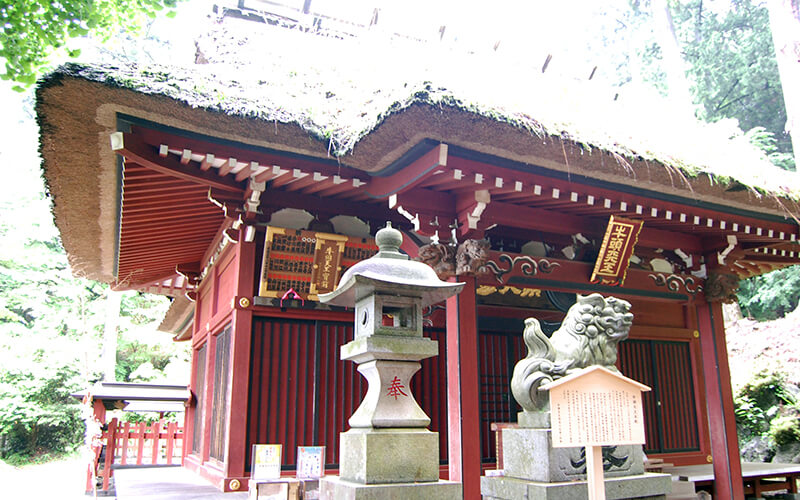

It’s also possible to hire a traditional room to practice copying the sutras or enjoy other activities with family and friends inside one of the temple buildings.
<Takedera Temple>
Address: 704 Minami, Hanno City, Saitama Prefecture
TEL: 042-977-0108
Access: From Seibu Ikebukuro Line “Hanno Station” or JR “Higashi Hanno Station”, take a taxi for 30 minutes to the Takedera parking lot, and it will cost about 6,500 yen (17 km).
If you use a bus, take the Kokusai Kogyo Bus bound for Nakazawa from the north exit of Hanno Station and get off at the terminal (40 minutes), then walk 40 minutes from the terminal.


Noninji Temple
The temple is approximately a 20 min walk from Hanno Station. Take a stroll and enjoy the natural landscape at nearby Hanno riverbeach and Mt. Tenran.
The original temple was built in the early 1500s but later burned down in the mid 1800s and rebuilt at a more recent date.
They offer Zen meditation every Sunday morning which anyone can join.
Please take a look at their website if you’d like to know more about it or have any questions.
There is also a beautiful Japanese garden popular amongst amateur photographers.

<Noninji Temple>
Address: 1329 Hanno, Hanno City, Saitama Prefecture
TEL: 042-973-4128
Access: About 20 minutes on foot from the north exit of Hanno Station on the Seibu Ikebukuro Line. (About 5 minutes by taxi.) If you take a bus, take a bus bound for Meigo, Naguri Shako, Yunosawa, Seibu Hanno Hidaka Danchi from the north exit of Hanno Station on the Seibu Ikebukuro Line, get off at Tenran Yamashita, and walk for 5 minutes.

While you’re in Japan, there’s no better way to experience a unique part of Japanese culture than by spending some time in one of the many temples found hidden away in the mountains in Saitama Prefecture.
Let go of all your stresses and relax through meditation, chanting, copying out the sutras, and delicious food. This is one experience you’ll want to tell everyone back home about.



